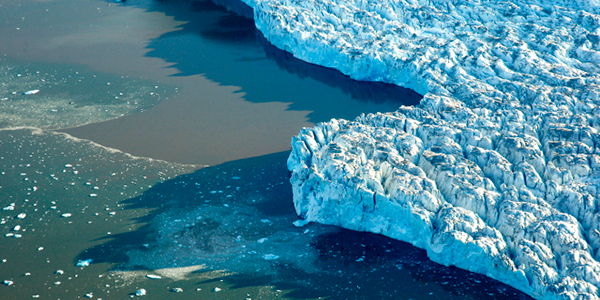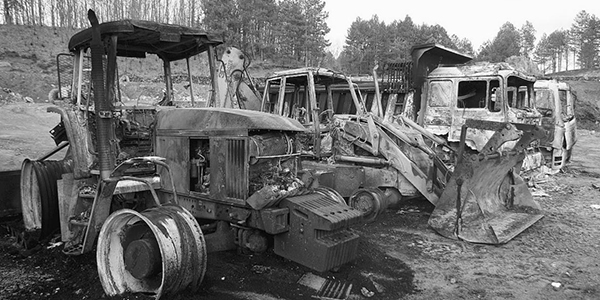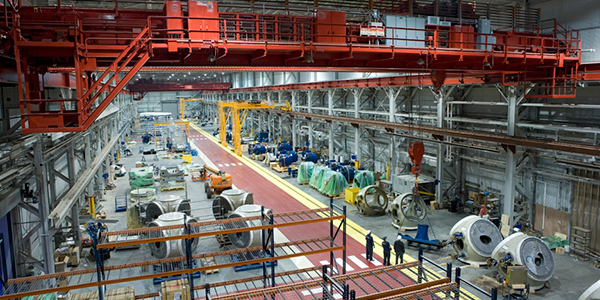By Arij Riahi and Tim McSorley / The Dominion
FORT MCMURRAY, AB—In the heart of Canada’s oil country, the booming town of Fort McMurray—casually dubbed Fort McMoney—is slowly becoming one of Alberta’s largest cities. From 2006 to 2012, the city grew by 53 per cent, going from a population of 47,705 to 72,994—far exceeding the growth of Alberta as a whole. This doesn’t count the “non-permanent residents” who are simply in town to work; including them, the population balloons to 112,215.
Nearby, however, Indigenous nations are struggling for cultural survival. The tar sands project continues to expand its destructive footprint on the traditional territories of the Beaver Lake Cree Nation, Fort McMurray First Nation and Athabasca Chipewyan First Nation, among others. For them, opposition to the industrial project is not an environmental concern or a left-leaning pet project. It is a matter of human survival.
“I never did look at myself as a campaigner or an organizer, or an activist or an environmentalist. None of those things,” said Crystal Lameman, a member of the Beaver Lake Cree Nation who now works as the Alberta Climate and Energy Campaigner for the Sierra Club of Canada Prairie Chapter. “And I can say I still don’t look at myself that way. You know, it’s just doing what I need to for the sacrifices that our ancestors endured to ensure that we have that ability to utilize the land, to sustain ourselves.”
Lameman, a mother of two in her mid-30s, has been working since 2012 to raise awareness among members of her community, located in the heart of northern Alberta’s tar sands territory, about the necessity—and possibilities—of fighting back against the tar sands.
These thoughts are echoed a further 300 kilometres north, by Chief Allan Adam of the Athabasca Chipewyan First Nation (ACFN). Located on the shores of Lake Athabasca, fed by the Athabasca River and downstream from the majority of the tar sands development, the ACFN has also been fighting against the impact of industrial pollutants on its land.
For the past four years, the ACFN and the Keepers of the Athabasca (a group of Indigenous and non-Indigenous people fighting for the protection of the massive Athabasca watershed, which feeds into the Athabasca River) have organized the Healing Walk. It was started as a way to bridge the divide between activists and residents of the area—many of whom work for the tar sands—who are concerned but are not interested (or able) to engage in traditional protests. This year, on July 5, hundreds from across Canada, including dozens from the tar sands area, gathered to walk through the tar sands and witness its impacts.
“I am labeled by government officials and the industry that I am an eco-activist. I am not an eco-activist. I am a user of the land,” said Chief Adam at the Healing Walk. “Environmentalists like to see the beauty of the landscape. I was brought up in the bush. I utilize and survive off the land. You may go in the bush and look at the scenery…I go in the bush and harvest the meat, and harvest the fish and whatever else I have to to feed my family. That is the difference between you and I.”
A peer-reviewed study released in 2010 by the Firelight Group Research Cooperative, which works with First Nations on community-based research projects, found that tar sands development has already severely limited access to First Nations’ traditional territory.
That link to the land is essential for Indigenous communities, said Lionel Lepine, a father of two who also lives in Fort Chipewyan. “One day, we’re going to be so damn rich [off the tar sands] that there will be nothing to buy. We’re going to be dead,” he said during a discussion at the Healing Walk. “And my poor great-great-grandchildren are going to suffer the consequences.”
Losing access to the land doesn’t only mean losing the the possibility of a subsistence way of life—including the ability to hunt or fish—but in some cases it means not even being sure what kind of development, or destruction, is taking place.
In late June, the Alberta government reported that an oil spill had taken place at the Primrose tar sands operation of Canadian Natural Resource Limited. The operations are located in the Cold Lake Air Weapons Range (CLAWR) in Cold Lake, Alberta, in Beaver Lake Cree Nation territory.
Lameman went to the site after getting news of the spill, but was initially rebuffed. Officials at CLAWR later changed their position and promised Lameman she could enter the area if the oil company agreed to let her in. Her calls to the company were not returned, she said. It took pressure from journalists and an eventual leak from an anonymous government scientist for the full extent of the spill to be revealed publicly in the Toronto Star in mid-July, including that 4,500 barrels of bitumen had so far been cleaned up from four different sites.
“To me, the response I got is a slap in the face of what it means to be in direct violation of our inherent constitutionally protected treaty rights,” she said. “It was really, really hard to actually feel that and experience that, and it’s not something I ever want to have to experience again, but I’m sure I will.”
Many Indigenous communities across the country are subject to such a disproportionate quantity of pollution that they have become infamous toxic hotspots. In Fort Chipewyan, cases of rare untreatable cancers have been documented since the early 2000s. But people living in the communities have been feeling the impacts long before any studies were commissioned.
“Given what’s going on over there—all the pollution—we call our town ground zero, because ultimately we feel the impacts of tar sands development first and foremost, and our people are dying,” Lepine said during the Healing Walk. “You know, I come from a town which only contains 1,200 people. And the cancer rate there is sky high in the last 10 years, beyond belief. The elders knew about this 40 years ago. When industry first came in, the impacts on our lands became pretty obvious, and as industry came in people started to die.”
For years, First Nations people, scientists, doctors and environmentalists have raised the alarm about the health impacts of the tar sands. It was only this past winter, however, that an investigation into the health concerns of First Nations communities living downstream, such as the Athabasca Chipewyan, was finally announced. The study will be led by the University of Calgary, with federal and provincial funding. The investigation follows a 2009 report, by Alberta Health Services, that showed higher rates of cancer in the community than is found in the rest of the Alberta population.
Since January, two separate reports have found Alberta’s lakes and groundwater are being polluted more than previously realized. The first, from Queen’s University and Environment Canada, showed high levels of carcinogens created by the tar sands extraction process in lakes up to 90 kilometres from tar sands extraction sites. The second, produced by 19 scientists from both the federal and provincial governments, confirmed ongoing seepage from tailings ponds into groundwater.
Tar sands impacts aren’t just felt in northern Alberta, but at every stage of the refining process, including in the southernmost reaches of the country. In Sarnia, Ontario, over 60 petrochemical facilities are concentrated in a 25-kilometre radius. At least three of these refineries, including Suncor and Imperial Oil who are active in Fort McMurray, process tar sands bitumen. The area is known as Canada’s Chemical Valley. It is also the home of the Aamjiwnaang First Nation.
“Growing up in this community, I experienced a lot of health issues, including asthma attacks, skin issues,” said Vanessa Gray, a youth organizer and member of the Aamjiwnaang First Nation who also spoke at the Healing Walk. “There’s a lot of cancer in my family where I grew up, [we were] going to a lot of funerals…it happened all the time.”
Gray’s concerns are well documented. In 2011, the World Health Organization described Sarnia’s air quality as the worst in Canada. Studies have also found alarmingly high rates of cancer, respiratory illnesses and reproductive disorders in the area, as cited in a 2007 report from Ecojustice.
For many Indigenous communities, the fight against the tar sands is a fight for their quality of life. “We’re all human beings first and foremost. We all drink water. So this involves everyone,” stressed Crystal Lameman. “This isn’t about race, colour or creed, this is about our lives.”
Ultimately, it is about the future. “I’m so worried about my kids,” said Lepine. “You know from the words of our elders, they’re our future, let’s support them. Let’s keep them alive, Let’s keep our kids alive. Let’s fight these guys. Let’s fight them harder, let’s take the gloves off.”
Arij Riahi is a legally-trained writer based in Montreal. Arij is at www.twitter.com/arijactually. Tim McSorley is an editor with the Media Co-op and freelance journalist living in Montreal.
– – – – – – – – – –
Originally posted by The Dominion here.




